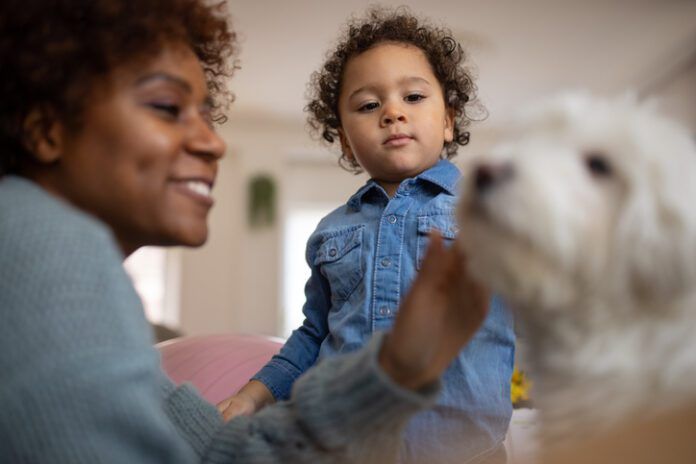Have you heard of “gentle parenting?” If so, you may have been introduced to the term as I have been: through a comedian making fun of it. When I first heard the term, I couldn’t tell you everything that it entails, but I recognized the snark, condescension, and ridicule that it engenders, because that’s how early devotees of force-free training were treated by dog owners who couldn’t conceive of training their dogs without punishment.
Whether it’s a parent dealing with a toddler in midst of a meltdown or an owner dealing with a dog who is over threshold in the face of something stressful or scary for that dog, if the person is remaining patient and kind, it’s somehow triggering for many people!
But the more I’ve looked into gentle parenting, the more enamored I am of this movement, and the more parallels between its strategies and force-free dog training I see.
It’s also referred to as “connection-based parenting” – which sounds a lot like “relationship-based dog training.” The underlying principle in both is to take pains to avoid doing things that will make your child or dog fear or distrust you.
Both philosophies are often misunderstood as being permissive or boundary-free. Neither of those descriptions are accurate, but the way that behavior is shaped and influenced is free of commands and verbal or physical punishments.
Gentle parenting and force-free training emphasize empathy for the other as critical. I love that! A dog owner who can’t appreciate how much dogs need to smell things or chew things or get some off-leash exercise sometimes is never going to be as patient and understanding with their dog as someone who knows that these behaviors are part of a dog’s genetic inheritance.
When I was hired to edit Whole Dog Journal, I wasn’t familiar with force-free training, but I steeped myself in the newly emerging literature and sought out every educational conference and workshop I could find to learn more about it and bring it to our readers. And I found that almost everything I learned had relative equivalents in how I wanted to raise my son, who was just 4 years old when WDJ was launched. Through positive dog training, I learned to “catch him doing something right” – to notice and reinforce the behaviors that I wanted to see more of (like picking up his toys, sharing and playing nicely with his friends, brushing his teeth without being prompted to do so, reading books, and so on). This didn’t mean I gave him a treat every time he did these things, but I would offer some reinforcement, such as some warm praise, attention, a comforting touch, or eye contact and a smile.
I often say that my son grew up into a smart, successful, loving, responsible human being thanks to positive dog training, but I see now that it was actually gentle parenting all long. Don’t make fun of something that works and feels so much better than a domineering or punishing relationship.







The gentle approach does work for ONE child or ONE dog. The reason it wasn’t popular in the past is because it wasn’t uncommon for parents to have between 4 – 6 children so rules and methods were harsher, like a do it or else there are consequences. This is still the case today for dogs and children in a multiple setting. There are fewer of those situations today but still enough of them the gentle approach will be far from being universally applied, dogs and children.
Maybe that’s why I like it! One kid, two dogs! 🙂